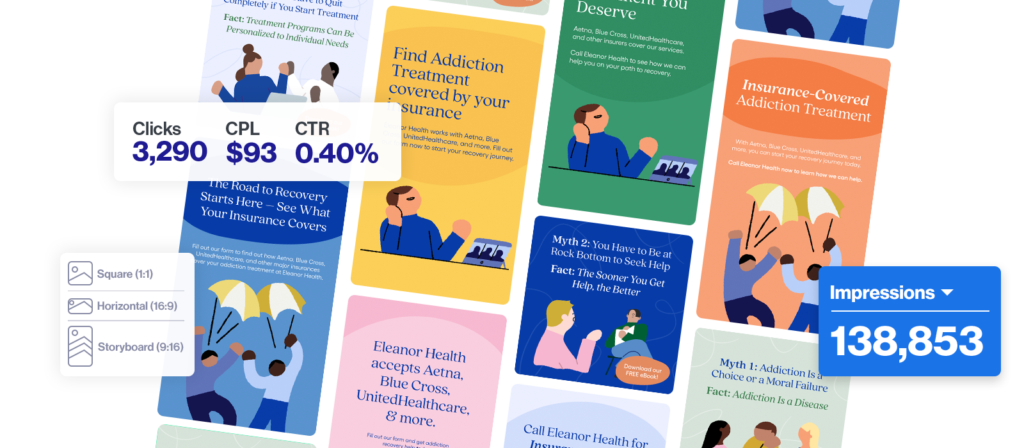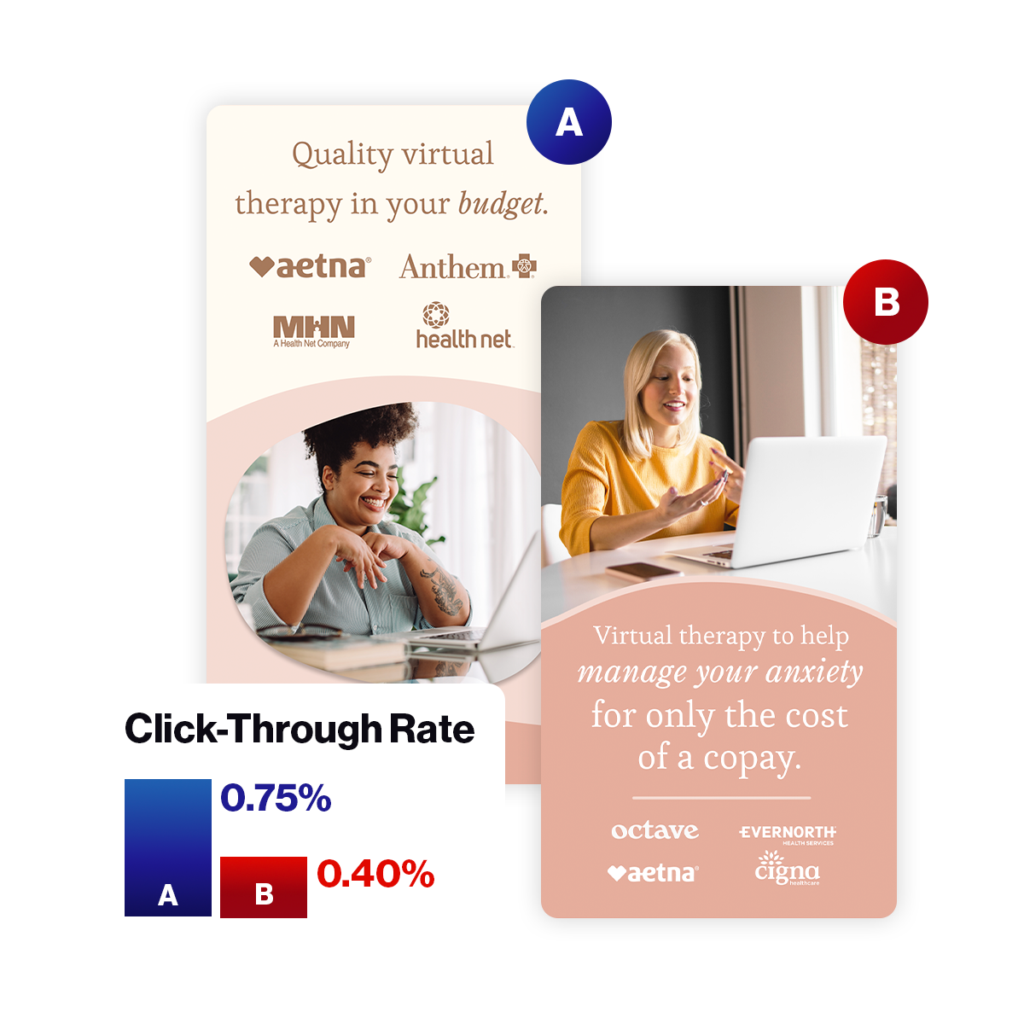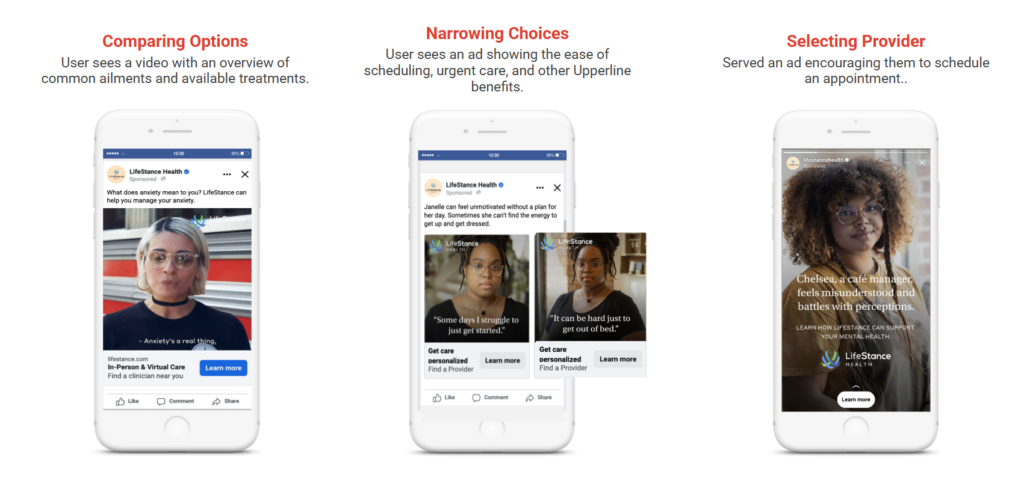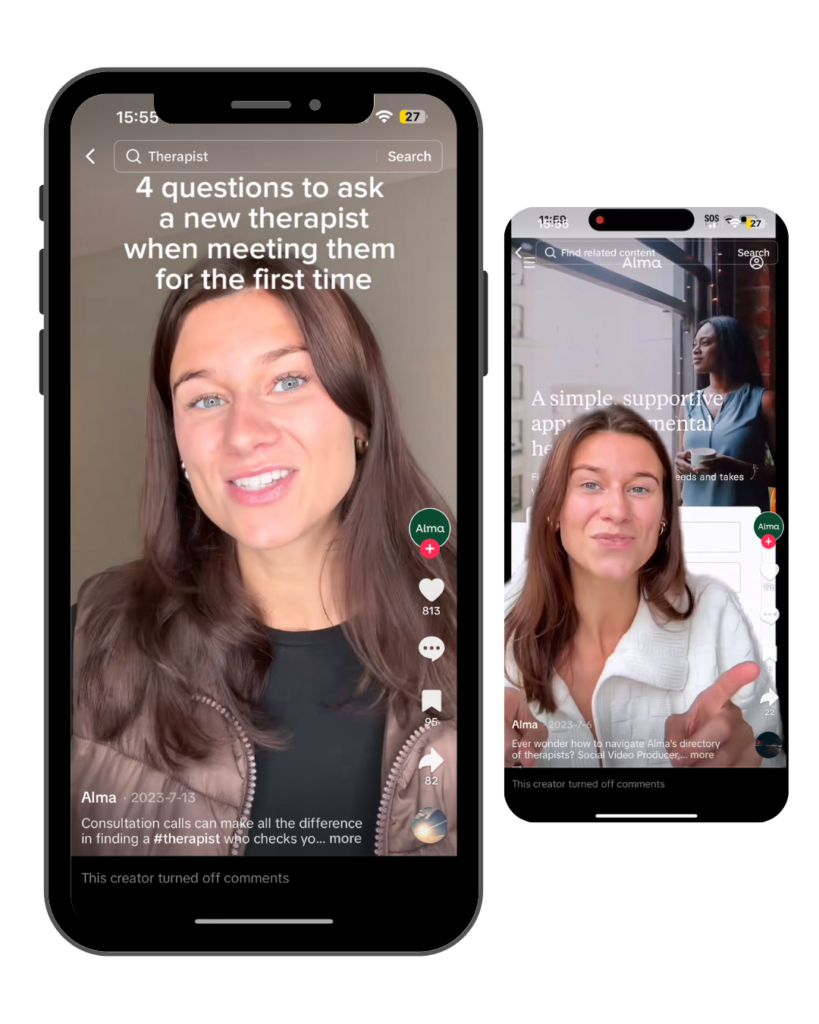What is Performance Creative?
Performance creative goes beyond good design—it drives results you can count. Unlike traditional brand ads, it links directly to specific goals at each step of your marketing funnel.
Table of Contents
“The byproduct of performance creative is often branding–it’s just not the end goal,” explains Rich Briddock, Chief Strategy Officer at Cardinal Digital Marketing.
With ad costs climbing and privacy rules limiting who you can target, creative has become a major lever for making paid media work harder.
Rich notes:
“Performance creative still plays a heavy role in driving awareness for that brand, especially if you’re spending at the top of the funnel because it’s typically still going to be 30-second video where you’re trying to build an emotional connection with that end user, get them interested in what you do, what problem you solve, what solution you bring and get them to move down into the funnel, into the middle of the funnel.”
For healthcare marketers, this means your creative must work harder than ever to capture attention, build trust, and move potential patients through their care-seeking path.

The Battle for Attention: How Competition is Reshaping Creative Strategy
Why creative matters more now:
Rising costs per click and fierce competition force marketers to find better ways to stand out. Platform algorithms, like Meta’s preference for fresh creative, make regular updates a must.
Jean Zhang, Senior Creative Director at Cardinal, emphasizes:
“The granularity of targeting is something that really does impact creative strategy. If we know we’re able to find a specific type of user based on their affinities, things that they’re interested in, we want to make sure that we’re leveraging that as we think through our messaging approach because those pieces have to work together.”
This becomes even more critical in healthcare, where audience needs vary widely. A behavioral health provider might need very different creative for someone seeking therapy for depression versus someone looking for ADHD management.
Warning signs your creative is failing
- Dropping click rates and engagement: You’ll notice people stop interacting with your ads, and costs per click start to climb without better results.
- High ad frequency with poor conversion: Your ads show repeatedly to the same users, but they don’t take action—a sign your message isn’t connecting.
- Same assets running too long without changes: The platform data shows declining performance week after week as your audience grows tired of seeing the same content.
Rich points out that performance creative requires more segmentation: “Audiences tend to become more segmented the further you go down the funnel, right? They tend to have more specific needs.”
He gives a practical example:
“In the middle of the funnel, if you’re a behavioral health provider group, if you know that someone has depression and is seeking out therapy, you want your performance creative to be very different for someone who is looking for ADHD services and seeking med management, right? It’s a totally different message. Whereas at the top of the funnel, you can probably get away with a much more generalized creative that speaks to how you help patients who need both med management and therapy.”
For healthcare marketers, this means you need to build a library of creative assets that speak to specific patient needs. Your ads must meet patients where they are in their care journey with messages that feel like they were made just for them. This targeted approach can make the difference between wasted ad spend and meaningful connections.
How to Test Creative Performance
Testing lets you spot winners and cut losers from your creative mix. Smart healthcare marketers set up systems to track what works, why it works, and how to make future creative even better.
Where to start:
- Match testing with campaign goals (brand awareness, lead generation, patient retention): Your testing strategy should reflect what you’re trying to achieve—whether that’s building brand recognition or getting appointment bookings.
- Focus on high-impact elements first (value propositions, imagery, calls to action): Start with the big stuff that patients notice first, like your main message or the people featured in your ads.
- Test meaningful variations, not just small tweaks: For example, a behavioral health practice might test an emotion-based headline (“Find relief from anxiety”) against a results-based one (“85% of patients report improvement in 8 weeks”) to see which drives more inquiries.
Jean explains:
“What we see after we start to get those learning[s] is more granularity. So we get to that micro-testing place when we start to get to a place where we’re truly iterating small A/B variances. For instance, CTA language that says ‘Get Started’ versus ‘Learn More.'”
This staged approach helps healthcare marketers avoid getting lost in minor details before solving bigger creative questions. Start with major message testing to figure out what resonates with patients, then refine with smaller tests once you know your foundation works. This builds a strong creative strategy based on actual patient response, not guesswork.

Common mistakes healthcare brands make:
- Not aligning creative with audience segments
- Running the same creative too long
- Ignoring data about what works or engages the audience
These mistakes cost healthcare marketers both money and patient opportunities. When you show the same generic message to everyone, you waste impressions on the wrong people. And even great creative gets stale pretty fast, especially when served repeatedly to the same users without variation.
Most frustrating? Many marketers collect performance data but don’t use it to guide creative refreshes. They stick with what’s familiar rather than what’s working.
According to Rich, the refresh cycle depends on audience size and spend:
“If you’re targeting a very narrow audience and the message does not need to be consumed at a high velocity… and I’ve got a small audience and I’m spending a lot, then you’re going to need to refresh your creative a lot.”
He adds:
“If you’re doing top of the funnel where it’s very broad and you’re using something like Advantage Plus placements on Meta, you could probably get away with running that same video for months, right?”
Want to know the secret most healthcare marketers miss? Check your frequency metrics NOW. If patients see your ads 3+ times without clicking, your creative is dead – you just don’t know it yet. This problem multiplies for specialized services with small audience pools. Those potential patients might see your stale ads 10+ times, killing your chance to convert them.
Building a testing roadmap
Start broad, then refine based on data. Use proper tracking methods like UTM parameters and detailed naming conventions to monitor which creative elements work best.
Rich stresses the value of swapping out poor performers:
“Swapping that asset out and then seeing how that impacts not only that asset’s performance in that funnel stage, but also the full funnel performance as well.”
Before launching any test, set up proper naming conventions and analytics structure to track exactly what’s working. This prep work makes all the difference in being able to compare different messaging approaches—like whether value proposition-based messages outperform emotion-based ones for your specific healthcare audiences.
Without proper tracking, you’re flying blind with your healthcare marketing dollars. Set up your naming conventions and UTM strategy before launching campaigns, not after.
Aligning Creative with the Patient Journey
Performance creative must adapt to different patient needs across their decision-making path. It’s not one-size-fits-all.

Jean notes:
“A lot of brands get that very final piece right, right? So the conversion piece where it’s ‘What’s our major value prop?’ The part that I think a lot of brands could do additional work in is understanding that digital touchpoint and digital journey ahead of that decision stage.”
Think of patient acquisition like dating—you wouldn’t propose marriage on a second date. Similarly, don’t ask patients to book appointments when they’re still researching symptoms. Make sure what you put in front of potential patients matches where they are in their decision process, not where you want them to be.
Remember: patients don’t want your appointment booking link when they’re still trying to figure out if their symptoms matter—they want answers first.
How Patient Research Shapes Creative Testing:
- Use research to understand decision-making factors
- Match creative to patient journey stages (awareness, consideration, conversion)
- Customize messages and visuals to meet audience expectations
Rich suggests two approaches to inform segmentation:
“You can go with a research-led approach… going to the business to the client and saying, ‘okay, who are my personas, who are my ideal customer profiles, and how different are they? How do their needs differ?'”
The second method uses data:
“Look at your first-party data and understand, ‘okay, I have this type of buyer, and then I have this type of buyer based on the traits that I capture about those folks,’ and also just looking at in-platform performance.”
Smart healthcare marketers combine both approaches—start with research-based personas, then validate and refine through actual campaign data. This hybrid method prevents you from building creative strategies based on assumptions that might not match how real patients behave online.
Trends in Performance Creative: Where We’re Headed
Consumer expectations keep shifting, and healthcare brands must keep pace.
Jean observes: “The consumer gravitates more towards real voices. And I think UGC [user-generated content] is a really good way for brands to bring that to life.”
Today’s trends include:
- Shorter attention spans demand quick, engaging video content
- Rise of UGC and organic-feeling ads—authenticity often beats polished brand content
- Need for testing branded vs. unbranded approaches
Healthcare & UGC:
Healthcare marketers can use patient stories in creative while staying compliant. This builds trust through authenticity.
Jean suggests:
“In terms of testing for that, I think it really is worth testing more so on that grand scale. Right? So we’re not talking about micro-testing anymore. We’re talking about putting something into market that is fairly different and just seeing performance there, honing in afterwards.”
She adds:
“UGC has to feel authentic, it has to be authentic to some extent, and I think for some brands that can pose to be a little bit more challenging with how they shoot it, the voice over, how authentic the feedback from that person feels.”
Lauren Leone, Chief Growth Officer at Cardinal, notes the practical challenges:
“So much of it hinges on having strong relationships with patients, former patients, someone who you believe can be an advocate… There’s really no replacement, and sending in an actor to kind of pretend to have that experience might fall flat.”
For healthcare brands, building a pipeline of patient success stories should become part of your marketing infrastructure. Start capturing authentic testimonials now—patients can spot fake stories instantly, and nothing kills trust faster than manufactured “authenticity.”
Performance Creative is No Longer Optional
Let’s face it: your fancy targeting tactics aren’t enough to drive performance anymore. Creative is now your #1 performance lever, and leaving it off your priority list will cost you.
Want to survive in healthcare marketing? Here’s your new playbook:
- Customize your creative for EACH stage of the patient journey—awareness needs emotion, consideration needs proof, conversion needs urgency
- Embrace AI optimization tools but maintain strategic control
- Run fresh tests EVERY month—what worked last quarter is already getting stale
- Stop making decisions based on gut feelings—track everything and let numbers talk
- Balance brand consistency with performance-driven agility
Bottom line: Performance creative isn’t some nice-to-have for healthcare marketers. It’s the difference between burning cash on ads nobody cares about and building a patient acquisition machine that outperforms your competition by 2X, 3X, or more.

